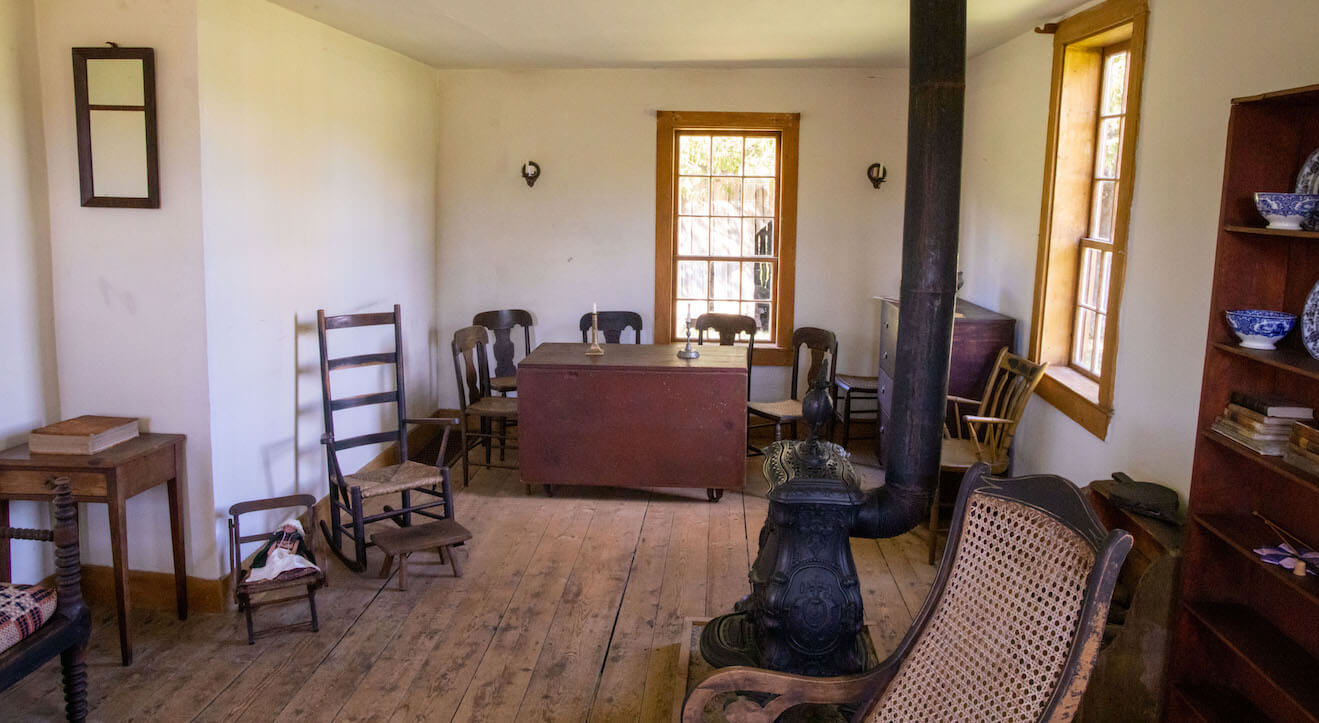John Brown Farm State Historic Site
Photo by Derek Wright.
John Brown Farm
John Brown Farm State Historic Site, nestled in the Adirondacks at North Elba New York, protects and interprets the famed abolitionist’s family farm and final resting place. Brown was a controversial slavery abolitionist who was most active in the 1850’s. His approach of direct and often violent action was intended to end the advance of slavery in the western territories and states. His later attempt to start an armed rebellion by raiding an armory at Harpers Ferry, failed and led to his execution by the state of Virginia.
Though we are quite familiar with Brown’s history in Kansas and at Harpers Ferry, we truly had no idea until our recent visit that Brown lived and is now buried in New York State—this site shaped a composite portrait of his life and values, and how his family was both supported and compromised as his political agenda gained momentum.
History
Photo by Derek Wright.
The family home and barn are the original structures. Brown, originally from Connecticut, built a southern New England style wood frame house; most homes of the time in this northern New York region would have actually have been log cabins. Brown moved to the area in the 1840’s to assist with fulfilling a land grand project, named Timbuctoo, which supplied free land to African-Americans. In order to vote at the time, you needed to own $250 in cash or land. The land grants were designed to allow more African-Americans to be able to vote under New York laws.
Photo by Derek Wright.
John Brown’s Grave
Where his body “lies a moldering in the grave” as the famous song, “John Brown’s Body” mentions. The stone itself is originally his grandfather’s cenotaph (hence the marking of John Brown III). Brown purchased it from relatives and shipped to his farm. The stone also notes that his son Oliver, killed in the raid at Harpers Ferry, is also buried here.
The graveyard
The graveyard also includes the graves of other family members and some members of his militia, killed in action or executed from the raid on Harpers Ferry.
Photo by Derek Wright.
Photo by Derek Wright.
the farmhouse
Make sure to take the house tour, offered from May to October. The home has recently undergone a significant renovation, including a new roof and wood siding, and looks great along with retaining authentic mid 19th century qualities. In the winter, this is where you would meet up for the authentic horse-drawn sleigh ride offered by Country Dreams Farm.
Photo by Derek Wright.
Parlor room
The house features several original Brown furniture pieces owned by the Brown family, including the set of chairs around the table, the bookshelf on the right, and the rocking chair in the foreground. Mary Ann Brown, John’s wife, oversaw the home and operations, as well as being an excellent farmer of potatoes.
Photo by Derek Wright.
Kitchen & Bed room
A master bed in the kitchen? No, our ranger lets us know that a wall would have separated these rooms. Still, tight quarters for a family of 10+! The children slept on the 2nd floor. John and Mary Ann had 13 children, but only six survived to adulthood. John also brought with him 5 surviving children from his first marriage to Dianthe, who died during childbirth.
Artifacts
The site also has various macabre artifacts, including this shaving cup made from the wood of the gallows on which Brown was hanged.
Photo by Derek Wright.
Artifacts
And this bill for NYC funeral services. On the Bowery as well, which was quite trendy back then, and again today!
Trails
New York State Parks also maintains several miles of trails on the site. Most would be considered easy to moderate in difficulty, and are a great way to explore forested sections of the Adirondacks without much elevation gain. One leads to a good view of the Lake Placid ski jumps that were built for the 1980s Olympics, another leads to what were Mary’s highly succesfull potato fields (now re-wilded with second growth trees.)
Winter sports / 1980 Olympics
The Lake Placid ski jumps from the 1980 Winter Olympics abut the Brown Farm site. The giant structures rise up and tower above the woods, making us feel more like we’re in the film “Return of the Jedi” and on the planet Endor!
Barn Exhibit
The barn also has an exhibit on “Timbuctoo” the land grant experiment devised by Gerrit Smith to help African-Americans gain enough wealth to be able to vote in New York State. Unfortunately, the program was unsuccessful for a variety of reasons, though mostly due to the difficulty of actually farming the Adirondack region which has an extremely short growing season. Most grantees also came from cities and had no previous farming experience.
Adirondack chairs
The site also features many Adirondack chairs to relax, admire the views, and contemplate the radical abolition actions of John Brown and his family.






















